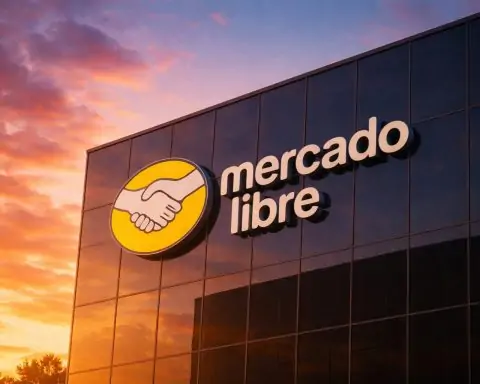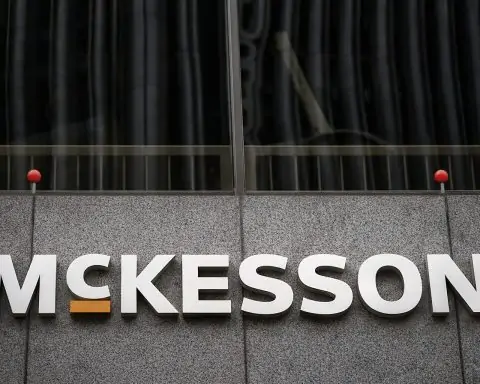Metsera Inc. (NASDAQ: MTSR) stops trading today, November 14, 2025, as Pfizer closes its up to $10 billion obesity-drug acquisition. Here’s what Metsera shareholders and obesity-market investors need to know about the deal terms, CVR, delisting, and future milestones.
Date: November 14, 2025
Ticker: MTSR (Metsera, Inc.) – now being delisted
On Friday, November 14, 2025, Metsera, Inc. officially disappears from the Nasdaq tape. Trading in Metsera (NASDAQ: MTSR) has been suspended after Pfizer completed its acquisition of the obesity-focused biotech in a deal valued at up to $10 billion, capping one of the fiercest pharma bidding wars of the year. [1]
According to the Nasdaq corporate action notice, Metsera shareholders approved the merger with Pfizer at a special meeting on November 13, 2025. The merger closed the same day, with November 13 set as the last trading date for MTSR and November 14 as the effective date for the stock’s suspension from trading on the Nasdaq Stock Market. [2]
Key facts about the Metsera (MTSR)–Pfizer deal
- Acquirer: Pfizer Inc. (NYSE: PFE)
- Target: Metsera, Inc. (NASDAQ: MTSR), a clinical‑stage obesity and cardiometabolic biotech [3]
- Headline value: Up to $10 billion, or $86.25 per share at maximum payout [4]
- Upfront cash:$65.60 per share in cash
- Contingent Value Right (CVR): Up to $20.65 per share in additional cash tied to three clinical/regulatory milestones [5]
- Last regular trading day: November 13, 2025
- Trading status today (Nov 14): MTSR suspended/delisted from Nasdaq; Metsera is now a wholly owned subsidiary of Pfizer [6]
Pfizer closes the Metsera acquisition: Obesity play becomes official
Pfizer’s own press release confirms it has completed the acquisition of all outstanding Metsera shares, describing the transaction as a strategic push into one of the “most impactful and high‑growth therapeutic areas” — obesity and cardiometabolic disease. [7]
Through the deal, Pfizer acquires: [8]
- MET-097i – a GLP‑1 receptor agonist designed for weekly and monthly injectable dosing, about to enter Phase 3 development.
- MET-233i – a monthly amylin analog in early-stage trials, being studied alone and in combination with MET‑097i.
- An oral GLP‑1 candidate in Phase 1 development.
- A broader pipeline of nutrient-stimulated hormone (NuSH)–based therapies targeting obesity and related metabolic diseases.
Metsera’s own website has already been updated with a banner that simply states: “Metsera was acquired by Pfizer”, directing visitors to Pfizer’s site for further updates — a symbolic end to its brief life as an independent public company. [9]
In parallel, Reuters reports that the deal marks Pfizer’s re‑entry into the obesity market after it scrapped two earlier oral GLP‑1 candidates over liver safety concerns, leaving it lagging behind Novo Nordisk and Eli Lilly in the weight‑loss drug race. [10]
Deal terms: $65.60 cash today, CVR for tomorrow
How much do Metsera shareholders get?
Between Pfizer’s press release, Nasdaq’s alert, and Metsera’s Form 4 filings, the economics of the merger are now very clear: [11]
- Each common share of Metsera has been converted into:
- $65.60 in cash, plus
- One non‑transferable contingent value right (CVR) per share.
Pfizer states the cash leg implies an enterprise value of about $7.0 billion, with the CVR structure taking the total potential deal value to $86.25 per share, or roughly $10 billion, assuming all milestones are hit. [12]
The CVR:
- Represents the right to future cash payments, up to $20.65 per share in total.
- Is tied to three specified clinical and regulatory milestones related to Metsera’s pipeline (Pfizer has not publicly broken down each trigger in today’s press materials). [13]
- Is non‑transferable, meaning investors generally cannot trade it like a stock; it simply sits in their account, and if milestones are reached by certain deadlines, cash gets paid out. [14]
A late‑evening Form 4 filing from Metsera’s Chief Scientific Officer, Brian Hubbard, confirms how the merger consideration flowed through equity: common shares were converted into cash and CVRs, and stock options/RSUs were cancelled or cashed out based on their in‑the‑money value plus CVRs, with unvested portions continuing to vest over time under Pfizer. [15]
MTSR delisting: What happens to the stock today?
For traders and long‑time shareholders alike, the immediate question is: what happens to MTSR now that it’s off Nasdaq?
The Nasdaq Corporate Actions Alert lays out the mechanics: [16]
- Last trading date: Thursday, November 13, 2025.
- Effective suspension date:Friday, November 14, 2025 – today.
- From today, MTSR no longer trades on Nasdaq.
Market data provider StockAnalysis shows that Metsera last traded around $70.68 per share late on November 13, 2025 — a modest premium to the $65.60 guaranteed cash leg, reflecting investor expectations around CVR value. [17]
What investors typically see next (mechanically):
- Within a few business days (timing varies by broker and clearing), former MTSR shareholders usually see:
- A cash credit at $65.60 per share, and
- A new line item representing the CVR, often with a nominal value (or sometimes no quoted value at all).
- The CVR is administered under a dedicated agreement between Pfizer and a rights agent, and any future payments are wired automatically to holders of record if and when milestones are achieved. [18]
Because MTSR is now wholly owned by Pfizer, there is no longer a way to invest directly in Metsera as a standalone stock; exposure to its pipeline is now gained indirectly through Pfizer shares and through whatever value investors ascribe to the CVR. [19]
(As always, investors should check their own broker’s corporate‑actions notices for exact timings and treatment; this article is informational, not personal financial advice.)
Why Pfizer fought so hard for Metsera’s pipeline
The scale of the deal only makes sense if Metsera’s science is special — and that’s exactly what Pfizer and Metsera both argue.
Metsera describes itself as a clinical‑stage biotechnology company focused on “nutrient‑stimulated hormone (NuSH) therapies” — ultra‑long‑acting injectable and oral peptides designed to treat obesity, overweight and related metabolic diseases, with an emphasis on convenience, scalability and tolerability. [20]
From Pfizer’s and Reuters’ combined disclosures, several strategic attractions stand out: [21]
- A differentiated GLP‑1 asset (MET‑097i):
- A once‑monthly (and weekly) injectable GLP‑1 receptor agonist moving into late‑stage (Phase 3) trials.
- In mid‑stage studies, MET‑097i achieved up to ~14% weight loss, putting it in the same competitive band as established GLP‑1 medicines. [22]
- Combination and multi‑hormone strategies:
- MET‑233i, an amylin analog, is being tested alone and in combination with MET‑097i, aiming to boost efficacy and durability versus GLP‑1 alone. [23]
- Oral obesity candidates:
- Metsera is also advancing an oral GLP‑1 candidate, tapping into the shift toward pill‑based weight‑loss drugs that could be easier to manufacture and distribute at scale. [24]
- A long runway of NuSH programs:
- Beyond named assets, Metsera’s platform is designed to continuously generate next‑generation NuSH analogs targeting obesity and related conditions such as diabetes. [25]
For Pfizer, the strategic logic is clear: analysts expect the global obesity‑drug market to reach around $150 billion annually by the end of the decade, and the company needed a credible way back in after earlier pipeline setbacks. [26]
The bidding war with Novo Nordisk: How we got to today
Today’s delisting is the endpoint of a weeks‑long bidding war between Pfizer and Novo Nordisk, the maker of Wegovy and Ozempic.
Key moments, based on Reuters, market data and prior press coverage: [27]
- Early November: Novo Nordisk made an aggressive rival offer for Metsera after Pfizer had already struck a deal, forcing Metsera’s board to evaluate a “superior proposal” and triggering litigation and regulatory questions.
- November 7–8: Both suitors raised bids toward the $10 billion mark. Reports indicated the FTC and other regulators were watching closely, given the concentration of power in obesity drugs.
- November 8: Reuters reported that Pfizer won the bidding war, agreeing to pay up to $10 billion and securing Metsera’s board support as Novo Nordisk exited the contest. [28]
- Market reaction: Metsera’s shares swung sharply — surging on takeover speculation earlier in the week, then dropping more than 15% on November 10 after the final Pfizer offer was accepted, as arbitrage traders locked in spreads and recalibrated CVR odds. [29]
Even today, Metsera remains a talking point in coverage of Novo Nordisk: a fresh Motley Fool article on November 14 about Novo Nordisk’s stock performance explicitly highlights its failed attempt to acquire Metsera and the significance of MET‑097i in the GLP‑1 arms race. [30]
What today’s news means for different types of investors
1. Former Metsera (MTSR) shareholders
- No more trading in MTSR: The stock is suspended from Nasdaq as of today and will be formally delisted. [31]
- Value now = cash + CVR:
- Locked‑in $65.60 per share in cash.
- Long‑dated CVR exposure, whose value depends entirely on Metsera’s obesity pipeline clearing key development and regulatory hurdles on time. [32]
- Risk profile: The CVR can end up being worth nothing or worth the full $20.65 per share, or somewhere in between, depending on milestone outcomes. It typically pays all‑or‑nothing on each milestone rather than trading like equity.
2. Pfizer shareholders and watchers
For Pfizer investors, Metsera adds: [33]
- A late‑stage obesity franchise potentially launching around 2028–2029 if trials succeed.
- A way to offset upcoming patent cliffs, with Pfizer projecting a $17–18 billion annual revenue hit from 2026–2028 as key drugs lose exclusivity.
- Short‑term earnings dilution, as Pfizer itself warns the deal will be dilutive through 2030 while it pours money into late‑stage R&D.
Analysts and commentators have already framed the deal as a test case for biotech M&A, especially for CVR‑heavy structures and the premium big pharma is willing to pay for credible obesity assets. [34]
3. Obesity drug sector and rivals
For the broader GLP‑1 and obesity drug landscape, the Metsera delisting is less about one ticker vanishing and more about: [35]
- Pfizer re‑joining the front line against Novo Nordisk and Eli Lilly with differentiated dosing (monthly injections, oral options).
- Intensifying competition that could pressure pricing longer‑term but also expand the overall market as more patients gain access to more convenient formulations.
- A demonstrable signal that clinical‑stage obesity assets now command mega‑deal valuations, encouraging other biotechs to invest in similar platforms.
Timeline and milestones to watch after today
While specific CVR triggers are not fully spelled out in today’s public documents, the roadmap implied by Pfizer and Reuters suggests several broad milestones: [36]
- Start and progress of Phase 3 trials for MET‑097i.
- Key Phase 3 readouts – particularly weight‑loss efficacy, safety, tolerability, and cardiovascular outcomes versus existing GLP‑1s.
- Regulatory filings and approvals for Metsera’s lead obesity regimen (injectable and potentially oral).
- Commercial launch timing, currently guided by Pfizer as 2028–2029, which may influence how investors handicap the CVR.
For now, however, the headline story on November 14, 2025 is simple:
Metsera is no longer a standalone public company. The MTSR ticker is going dark as Pfizer bets up to $10 billion that Metsera’s NuSH‑based obesity pipeline will help it reclaim a leadership role in one of the fastest‑growing drug markets in the world. [37]
Final word & disclaimer
Metsera’s delisting marks the end of a short but dramatic chapter for MTSR investors and the beginning of a longer one inside Pfizer. The cash portion of the deal crystallizes value today, while the CVR leaves holders exposed to the long‑term success or failure of Metsera’s experimental obesity medicines.
This article is for news and educational purposes only and does not constitute investment advice, a recommendation to buy or sell any security, or an assessment of suitability for any individual investor. Always do your own research or consult a licensed financial adviser before making investment decisions.
References
1. www.reuters.com, 2. nasdaqtrader.com, 3. stockanalysis.com, 4. www.reuters.com, 5. www.pfizer.com, 6. nasdaqtrader.com, 7. www.pfizer.com, 8. www.pfizer.com, 9. metsera.com, 10. www.reuters.com, 11. nasdaqtrader.com, 12. www.pfizer.com, 13. www.pfizer.com, 14. nasdaqtrader.com, 15. www.stocktitan.net, 16. nasdaqtrader.com, 17. stockanalysis.com, 18. www.stocktitan.net, 19. www.pfizer.com, 20. metsera.com, 21. www.pfizer.com, 22. www.reuters.com, 23. www.pfizer.com, 24. www.pfizer.com, 25. metsera.com, 26. www.reuters.com, 27. www.reuters.com, 28. www.reuters.com, 29. www.reuters.com, 30. finviz.com, 31. nasdaqtrader.com, 32. www.pfizer.com, 33. www.reuters.com, 34. www.statnews.com, 35. www.reuters.com, 36. www.pfizer.com, 37. nasdaqtrader.com







